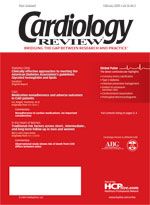Association between stroke risk and body mass index in women
The study by Kurth and Buring consisted of a prospective analysis among nearly 40 000 women participating in the Women's Health Study.
The study by Kurth and Buring consisted of a prospective analysis among nearly 40,000 women participating in the Women’s Health Study. In this very large study, the body mass index (BMI) of the participants was correlated with stroke incidence. At the 10-year follow-up, 432 strokes oc­curred in the study population, the majority (347) of which were ischemic strokes. Using the World Health Organization criteria for obesity, women with a BMI >= 30 kg/m2 had a hazard ratio (HR) of 1.50 for all strokes. The HR was 1.72 for ischemic stroke, with no statistically significant association for hemorrhagic stroke. Furthermore, when subdividing the study population among 7 BMI categories, there was a statistically significant trend toward increased risk of total and ischemic strokes as the BMI increased. In women with a BMI >= 35 kg/m2, the HR was 2.05 for total stroke and 2.81 for ischemic stroke compared with study participants with a BMI of 20 kg/m2. The association between BMI and total ischemic stroke was strongly mediated by hypertension, diabetes, and hyperlipidemia, but age, exercise, and smoking had no effect. The conclusion of the study was that BMI was a strong and independent risk factor for total and ischemic stroke but not for hemorrhagic stroke in women.
The clinical significance of this study is that the association between specific types of stroke and obesity in women has finally been established in a large cohort of subjects studied prospectively. This association has long been appreciated in men. The current message of this study is that obesity is a primary risk factor for stroke in women, despite the influence of hypertension, hyperlipidemia, and diabetes as contributors. These results are concordant with other studies, most notably the study by Li and colleagues, which showed that BMI was a statistically significant and independent predictor of stroke among normotensive men and women in Sweden. Although one can argue that obesity may lead to hypertension, type 2 diabetes mellitus, and coronary artery disease, the fact is that increased BMI itself strongly correlates with stroke risk in both men and women.
A major clinical take-home message from this study centers on the trend toward in­creased stroke risk across the 7 BMI categories. When the study population was divided into BMI categories ranging from < 20 to >= 35 kg/m2, the HRs for total and ischemic stroke were significant, even in the overweight but nonobese categories, with BMIs ranging from 25 to 30 kg/m2. What is apparent is that, similar to blood pressure and glycemic control in patients with hypertension and diabetes, perhaps our criteria for weight as defined by BMI need to be readdressed in our definition for overall health, especially for women.
The strengths of this study are many. The large patient population of close to 40,000 and the prospective methodology are unique. Further­more, the clinical follow-up period of 10 years allows full evaluation of the data. Lastly, the Women’s Health Study population was truly homogeneous.
In summary, the present study by Kurth and Buring is in line with other studies that help define medicine’s approach to addressing risk factors for cardiovascular events, such as stroke, in women. It is safe to say that practice patterns have mainly focused on men in the arena of cardiovascular risk reduction. Identifying and treating even moderately overweight women as part of their overall health management can, as the present study indicates, reap multiple, long-term health benefits.
